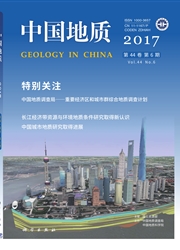

 中文摘要:
中文摘要:
随着煤炭资源的大量开发利用,其保有储量逐年降低,易于发现的露头矿、浅部矿日趋减少,尤其是经济发达的东部地区煤炭资源更为紧缺。当前找煤对象主要为地下隐伏矿床及盲矿体,找煤难度越来越大,因此探索如何发挥现代遥感及地理信息系统技术优势开展遥感找煤具有重要意义。本文从遥感找煤的理论基础出发,通过对以往中国遥感找煤实践的总结,系统阐述了遥感找煤的方法及存在的问题,提出了下一步遥感找煤的技术发展思路:即采用新型的多波段、多极化、多角度、多时相、多分辨率遥感数据,利用GIS工具对各种地理属性、地面属性、地球物理勘探、地球化学勘探、地质钻探成果、遥感影像数据进行空间综合分析,探索煤田地质背景和成矿规律,提取深层次煤田信息。
 英文摘要:
英文摘要:
With increasing large-scale exploration of coal resources,coal reserves have been reduced year by year,and outcrop and shallow ore deposits are diminishing day by day,particularly in eastern China.Therefore,the main exploration targets should be focused on concealed or blind coal deposits whose detection and exploration are rather difficult,and modern remote sensing and geographic information system technology can play an important role in this aspect.Based on coal-prospecting practice in the past,this paper describes the methods and problems of remote sensing for coal exploration,and puts forward some new ideas: analyzing a variety of geographical attributes,surface properties,geophysical and geochemical exploration,geological drilling results and remote sensing image data and using new remote sensing data with multi-band,multi-polarization,multi-angle,multi-temporal and multi-resolution characteristics to investigate geological setting and mineralization regularity and extract coal information in depth.
 同期刊论文项目
同期刊论文项目
 同项目期刊论文
同项目期刊论文
 期刊信息
期刊信息
